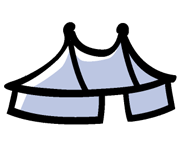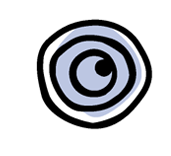télérama.fr11 November 2014
For their 30th, Cirque Plume celebrates the passage of time
As pioneers of the New Circus of the 80s, they have now been distilling their unique performance philosophy for over three decades. Here is their latest show, "Tempus Fugit".
With this their tenth show, Tempus Fugit? une ballde sur le chemin perdu, Cirque Plume juggle with all of the ingredients which have been essential to their constant success of the last thirty years: Blues & Jazz, breathtaking acrobatic figures, intense images, a wide array of colours, and clever references. Cirque Plume are festive, committed dreamers and amongst the pioneers of the "New Circus" of the 80s, building their shows on the juggling, acrobatics, dance, theatre, side-show and music; the very foundations that were shared by each of its dozen or so founding members. Over thirty years and ten productions (Toiles, RéCréation, Plic Ploc, L’Atelier du peintre…), they have developed their own conventions. Tempus Fugit? A song for the lost road, created in 2013, celebrates their journey so far and, through the introduction of a group of new and younger artists, lays the foundations for the future of Plume’s unique identity within the history of contemporary circus.
Circus and music
With Plume circus and music exist in perfect symbiosis. Most of their performers are musicians as well; nearly all of the musicians are part of the show, either on-stage or perched on various paraphernalia about the stage. The trapeze, tightrope, Cyr wheel, Chinese pole routines evolve to the agile accompaniment of the saxophone, trumpet, piano, drums and electric guitar building up to the final acrobatic figure which sends the musicians off again on a new tangent. Each artist takes the time to free themselves from their own partition. Benoît Schick’s original compositions, inspired by blues & jazz, stand out whilst respectfully existing within the soundtrack originally created by the Company’s principal composer Robert Miny, who unfortunately died in March 2012 right at the start of the creative process for Tempus Fugit?.
Colour and shadow
Plume play with shimmering, soft ranges and hues of light in combination with the colours of their costumes: lime-tree green, cherry red, orange and yellow ochre. The strong image of the elusive red ball at the rear of the stage draws the eye as it continually shrinks and grows, at once an incandescent sun then a child’s ball or a clown’s red nose... At the same time there is a stark contrast as Plume also use shadows to weave the show’s backdrop. They parade and greet each other behind large white sheets, creating doubles of the musical instruments and paraphernalia, multiplying possibilities or opening up new imaginary vistas. "I was always fascinated by the beauty of shadows: they are like another image-filled world within our own real world, explains Bernard Kudkak, co-founder and artistic director of Cirque Plume. They invite us to look at things differently."
The celebration of the passage of time
Cirque Plume have always been based in the Franche-Comté region of France and have always used time in every aspect of their work. With Tempus Fugit?, they take the clock-makers literally: the "lost road" of the title refers to the space between resting and falling, between the tick and the tock of watches and grand-father clocks, that moment of freedom that every acrobat wishes would last forever. Plume use the breath-taking leap, the balance across the tight-rope and the constant and willed search for danger to suspend time for all eternity. Plume mark time with the metronomes put in to motion by the clowns, a clever reference to their previous show Plic Ploc.
The poetry of objects
Here and there Plume insert found objects to underscore the poetry of the show. White sheets on the stage inflate and swell into sand-dunes or mysterious landscapes for long breathtaking minutes. For the finale, a nocturnal ballet of twelve huge transparent spheres, an ethereal stream of stars, magic and mystery, like wandering souls. This dream-like wave motion is taken from a free-standing installation that was invented at the end of the nineteenth century by a physicist in Prague, who was seeking to translate musical harmony into physical movement.
Artistic flash-backs
For those who might catch them; Plume occasionally send out discreet references to their previous works, which themselves combined influences from other artistic universes (painting, photography, cinema, etc.) Such as the two performers who suddenly take on the poses of the two peasants of Millet’s Angélus, or Chagall’s wonderful flying violinist, in homage to their dear friend Robert Miny, or further images that fly across the stage: a hop-scotch game as a thank you to Doisneau, an umbella opened up by a couple as a reminder of Plic Ploc, a short Pierrot scene from Marcel Carné’s Les Enfants du Paradis and other brief instants making reference to the great masters: Baudelaire, Prévert, Buster Keaton, Chaplin or Fellini... Furtive and immense images like the passing of time with Plume. Unforgettable.
"Cirque Plume’s show is made by living people for living people: it is full of joy and colour, it is deep and poetic, dirty and vague but extremely precise." That says it all. Those are the words of Bernard Kudlak in the informative Cirque Plume Abecedary.
Stéphanie BARIOZ










